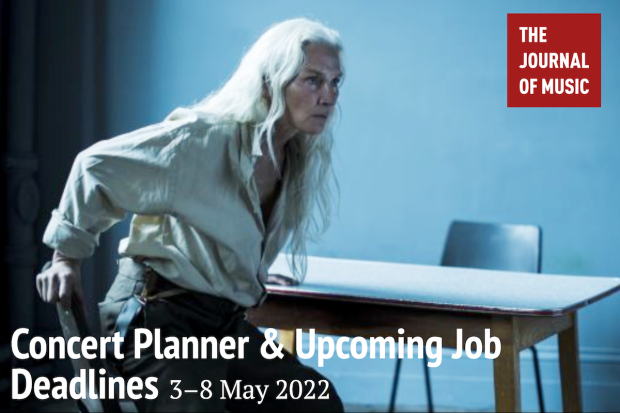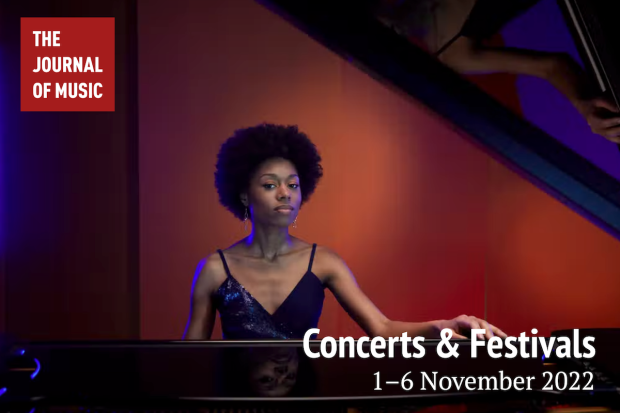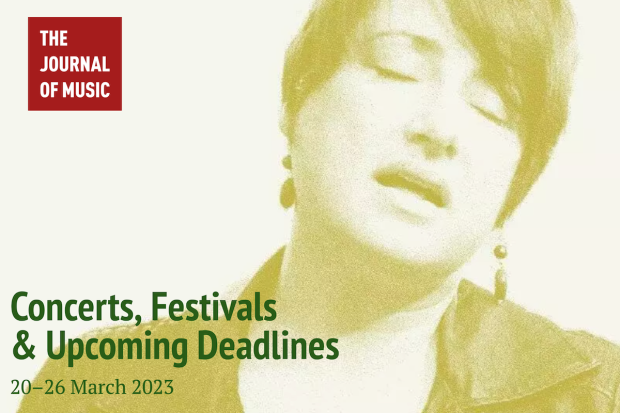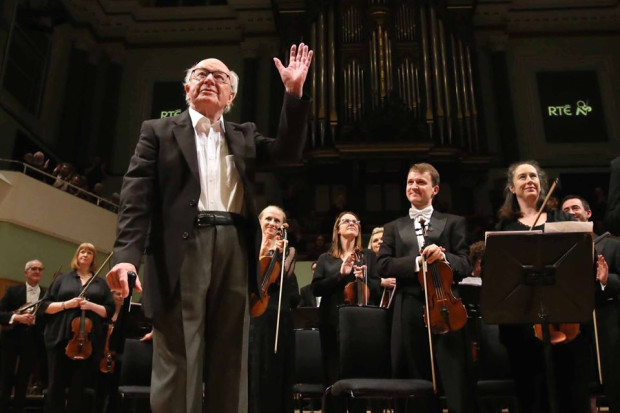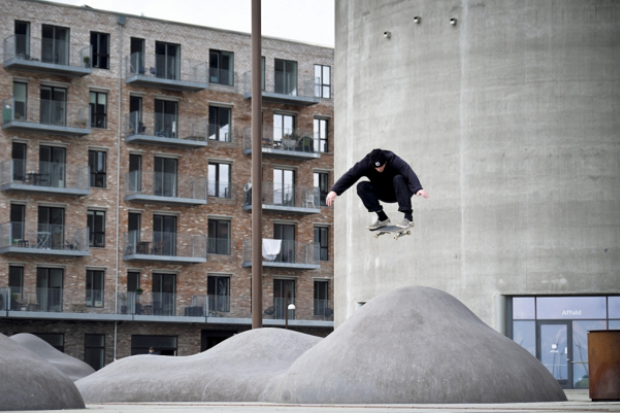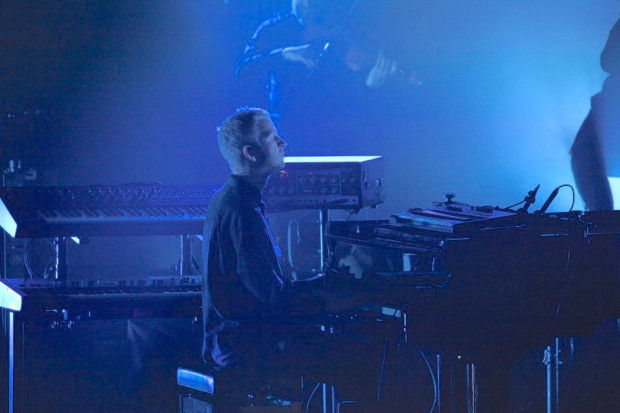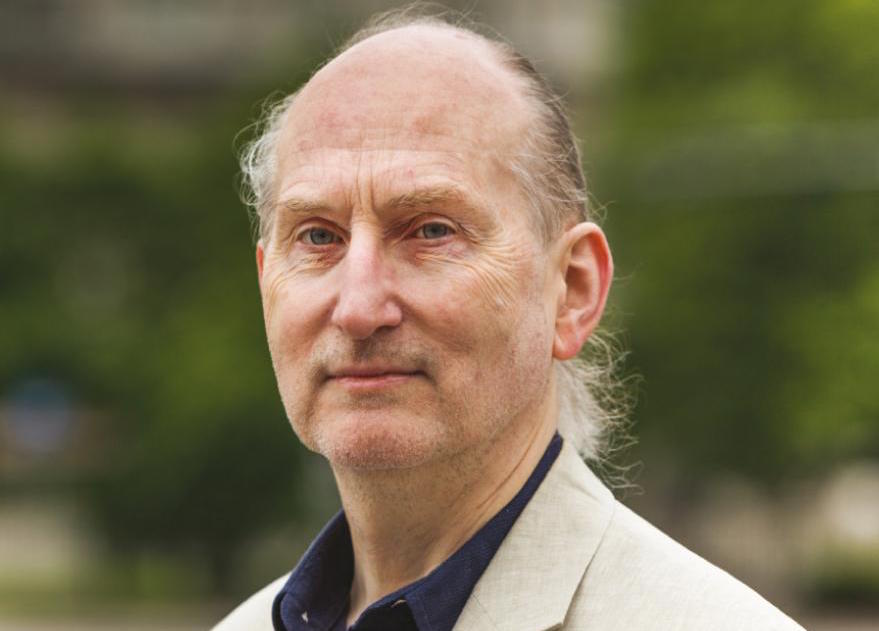
Michael Dervan
The Classical Music Establishment Strikes Back
For a time as a teenager all I wanted to be was a composer. I sought out biographies of the greats, from Bach to Ravel, read manuals on orchestration, and entered competitions. Then my performance side developed more and composition took a back seat, but my abiding interest in its craft stems from those days.
My early idea of a composer reflected my music education – the classic, pyramid type: classical music at the top and folk music at the bottom, starting with plainchant and working its way through fugue, sonata form, Sturm und Drang, serialism, and all the other agreed signposts. Once I learned more about traditional music, classical music, popular music and the wider contemporary music world, that pyramid dissolved into a world with not so much a clear structure, but rather a sparkling criss-crossing world of personal and community expression that could be understood in much more open ways.
Much of what we learn through a classical music education is quite narrow: a tight-fisted, suspicious narrative that avoids searching questions about music and personal expression. Thankfully, innovators regularly come along to turn a lot of the ideas on their head. Ireland has no shortage of them, from Roger Doyle to Jennifer Walshe. And yet, the beauty of the classical tradition is that it gradually manages to absorb many of these radical influences. It is an amalgam of ideas and waves from many cultures, using a sophisticated internal architecture that has been developed over centuries, comprising skills in composition, performance and education, to bind it all together. The gift of classical/contemporary music is not that it is an exclusive tradition, but that it is so inclusive.
And it fits well in Ireland: here, we have an intriguing tradition of classical music composition that dates from the sixteenth and seventeenth centuries; a thousand-year-old tradition of composing for indigenous Irish harps; a vast tradition of song composition in two languages – the origins of which date back to antiquity; a three-hundred-year-old tradition of composing instrumental popular dance music, particularly jigs, reels and hornpipes, for many instruments, native and imported; jazz composition from the early twentieth century; pop and rock music composition from the 1950s; electronic music from the 1970s; and many other newer strands of creative musical endeavour.
If you wanted to get Irish society thinking about the contribution of Irish composers to our cultural life, you wouldn’t have to look very far for several rich seams.
Creating this awareness was the reason for last September’s major three-week Composing the Island festival in Dublin, but, somehow, it focused only on what the conductor David Brophy described on RTÉ Radio 1 as ‘serious Irish composition’. Can you tell which one of the above it was?
Backlash
Different musical communities host festivals focusing on their own interests all the time, from concertina festivals to songwriter weekends, but they don’t usually command the resources and strength of both RTÉ orchestras, the RTÉ quartet and choir, National Concert Hall, Crash Ensemble, and the promotional ability of RTÉ across television and radio, not to mention attracting a major sponsor such as Bord na Móna. It is an awesome achievement that this event was brought to fruition, yet its scale and influence demands that the ideas behind it are explored fully.
The audiences for Composing the Island were inconsistent. It created as much division as good will – a counter-festival in Clare organised by composer Dave Flynn; criticism from women composers for lack of representation; criticism on social media from the contemporary, traditional music and pop music community for exclusions. And yet it powers on – a CD of the same name, with 27 tracks reflecting the programme, has just been released on the RTÉ Lyric FM label.
Accompanying Composing the Island last autumn was the publication of a major new book, The Invisible Art: A Century of Music in Ireland 1916–2016, which also reflects the programming approach of the festival. Edited by Irish Times classical music critic Michael Dervan, its central stimulus, like the festival, was the ‘invisibility of composers in Irish life’. Again, not all composers, but rather ‘classical composers in Irish society’, and despite the use of ‘music’ in the title.
If anyone thought that the wave of diversity and pluralism across Irish musical life in recent decades, in composition and performance, creating new, young, engaged audiences, would demolish the walls that have bedevilled Ireland’s musical life, then The Invisible Art and Composing the Island is your answer. The classical music backlash is here.
Invisible
On the inside back cover of The Invisible Art, Michael Dervan is described as ‘Ireland’s most widely read music writer’. One might think of Niall Byrne, the writer on pop, rock and alternative musics in Ireland who publishes the Nialler9 website. With over 80,000 followers on social media for his own content, as well as a regular Irish Times column, it is difficult to imagine that any other music writer in Ireland would be more widely read. But such an oversight sums up the approach of The Invisible Art: if it isn’t classical music, it may as well not exist.
The Invisible Art has over 300 pages, dozens of terrific colour and black-and-white photographs, and twenty-one contributors: 9 musicologists, 4 composers, 4 musicians, 2 critics, 1 conductor and 1 broadcaster. Given this range of expertise, it will surprise the reader how relatively little there is in the book about the art itself: music. Instead, we have a good deal of useful information on composers’ biographies and works composed, and other events of significance, such as festivals, awards, commissions, performances and concert series, but, in general, it is left up to the composers rather than the critics and experts to provide us with some insight into the body of art that is assumed to be ‘Invisible’.
In ‘No State for Music’, focusing on the years 1923 to 1951, we have one of the more peculiar passages from the book, where the German musicologist Axel Klein feels he has to justify not writing about the music.
I have sometimes been tempted to write a history of Irish music describing the music and nothing else, using as background the history of European classical music and nothing else. No politics. No religion. A consciously naïve approach. It is a tempting idea.
As things stand, however, we must find an explanation as to why the majority of Irish people seem to think they have no history of classical music.
There is no footnote for this latter statement. It is just presumed to be true. Klein suggests that he can not write about Irish music and Irish musical life because it does not fit into his traditional terms of reference. His statement that Irish people ‘think they have no history of classical music’ would challenge the comprehension of any reader. The Royal Irish Academy of Music was founded in 1848. For generations, Irish people have had extensive involvement in classical music, whether it be as part of choirs, professional and amateur orchestras, studying music or playing solo instruments, and often it is a connection that goes back through their family history. The fact that the book ignores the achievements of regional classical music promoters such as Cork Orchestral Society (est. 1937), Waterford Music (est. 1942), Music for Galway (est. 1981), Music for Wexford (est. 1993), Music for Kilkenny and the Con Brio Sligo Music Series; and hardly does justice to Belfast Music Society (est. 1921), Music Network (est. 1986), West Cork Chamber Music Festival or the Sundays at Noon Concerts at the Hugh Lane Gallery; while overlooking the wide-ranging classical music offerings of long-standing festivals such as Galway Arts Festival, Kilkenny Arts Festival and Clifden Arts Festival, and adventurous contemporary music promoters such as Moving on Music, New Sound Worlds and Note Productions, only serves to illustrate how shakily supported these statements are.
There are other statements in The Invisible Art that are remarkable in their nearsightedness. Joseph Ryan begins his essay, ‘Before the Beginning’, focusing on 1916 to 1922, by stating that ‘Ireland entered the twentieth century as a quiet musical backwater, unaffected by any of the major movements in European music’, then, later, ‘The truth is that music in Ireland at the beginning of the twentieth century was in a debilitated condition’, and finally, in the opening decades of the twentieth century, ‘Musical creativity… was never to the fore’ – all of which could only possibly make sense if you ignore the musical creativity of the 3 million people on the island at the time, which is what Ryan is doing of course, but it is difficult to read on with confidence when a contributor writes about something so porous as music – even classical music – in this way. In between, he surveys the work of just over a dozen classical composers, all of which is valuable, but the claustrophobia of his terms of reference make for a disappointing opening to the book. He concludes his essay by writing, ‘Some four decades after his initial introduction to Ireland, Sir Arnold Bax was to record that in his Dublin days, “there was no talk of music whatsoever”’. We would not rely on a single sentence from one moderately informed person, such as Bax, for the entire range of contemporary musical life today, so why is it acceptable to do that for previous decades?
Insight
These examples are not literary devices that are necessary in order to write about classical music in Ireland from the past. Ita Beausang, for example, writes a short insightful piece about the composer Ina Boyle (1889–1967), and the qualities in her music, without making any assumptions about what else was or was not taking place. Axel Klein is on surer ground when he is making the case for neglect of classical music in the writing on the history of Ireland, for example, the way incidental music wasn’t mentioned in a written history of the Abbey Theatre – but that does not mean that Irish people did not hear it.
‘The Long View’ by Michael Murphy contains an interview with Seóirse Bodley and John Kinsella that touches on many musical issues around composition and performance in Ireland, but in a piece with hardly any quotations from the interviews, Murphy never really provides the reader with an insight into what the music sounds like, beyond general points such as being influenced by Beethoven or Sibelius, or combining serialism and sean-nós.
Similarly, while Michael Dungan’s analysis of Gerald Barry’s work in ‘In the Time of the Celtic Tiger’ is colourful, his discussion of the music of Raymond Deane, John Kinsella and Frank Corcoran rarely goes beneath the surface, providing the kind of writing that would compel one to listen to their works.
Kevin O’Connell’s ‘Getting Into Gear’, covering the period 1952 to 1969, is refreshing in that it provides the kind of accessible but valuable insights that would be useful to a listener, motivating the reader to seek out works, consider the writer’s insights in relation to one’s own listening, and thus develop our understanding of this music. Mark Fitzgerald’s ‘Growth and Consolidation’, too, focusing on the years 1970 to 1989, has a brisk, engaging narrative.
Here is O’Connell on Ó Riada’s Nomos No. 2:
The choral writing is often starkly unison or octave-based, while the orchestral writing features the composer’s characteristically hard-driven ostinati. These technical means can seem meagre for a forty-minute work, and the invention is sometimes thin, but Ó Riada shows something of Bruckner’s capacity for weaving large paragraphs from large motifs….
Or on Victory’s Favola di Notte, ‘…the Irish work of the 1960s that comes closest to Bodley’s Configurations in its radical language’:
Victory had recently returned from Darmstadt and the experience clearly left its mark on this montage sonore of divisi string textures and strident brass writing. The effect is very bracing, even if it suffers, like much avant-gardism, from an unwillingness to give the listener’s attention some breathing room.
And on A.J. Potter’s Sinfonia de Profundis:
…there is always something menacing even in the most jubiliant moments of this teeming farrago of a score…
The exceptional orchestral métier has perhaps not been equalled by any Irish composer; the musical substance is of bewilderingly variable quality. In its inventive power and unresolved stylistic tensions, the Sinfonia joins the long list of mid-century Irish works that suggest paths opened up but never completely explored.
In Barra Ó Séaghdha’s recent review of Composing the Island, he described this same work as ‘becoming so relentlessly brassy and almost hilariously over-the-top as to verge on the wonderful’, and now we might understand why.
Dismissive
For the most part,The Invisible Art deals with the work of Irish composers chronologically, from 1916 to 2016, but Andrew Johnstone’s piece, ‘The Popular Touch’, attempts to wrap up the work of Bill Whelan and Shaun Davey separately.
Rather than discuss the wide range of music these composers have produced over forty years, for orchestra, choir, classical and traditional soloists, all of which were excluded by Composing the Island, Johnstone seems to try and set up a dismissive case by discussing the difference between the ‘classics’ RTÉ NSO and the ‘lighter’ RTÉ CO. He then switches to a discussion of one of the concerts held to mark the 1916 centenary last year that featured Whelan, Davey and Handel. Johnstone wonders why a composer more like Brian Boydell (1917–2000) wasn’t chosen to produce a work ‘aimed at a high-end classical listenership’. He also suggests that the fact that Whelan and Davey did not study music at third level meant they were ‘untouched by cosmopolitan avant-garde techniques’ and that they have pursued their career ‘no less as art than as business’.
As a piece in a serious book on two significant Irish compositional voices, this piece required substantial editorial attention. There is little evidence that Johnstone has listened in detail to either of these composers’ works, or that he has the knowledge of Irish traditional music needed to write about their compositions. Writing about Whelan’s Seville Suite, he describes the piece ‘Caracena’ as including ‘an original but basically orthodox jig tune’. It is actually entirely unorthodox. Jigs in traditional music are played in a clear 6/8 time throughout. This tune switches between a 6/8 and ¾ time. Students of music in Irish secondary schools learn these basic features about traditional music for the Junior Certificate.
Martin Adams, a former music lecturer in Trinity College Dublin, presents a piece titled ‘History in the Writing’ about recent writing on classical and contemporary music in Ireland. From the start, it falls into the traps of standard third-level classical music education, establishing a separation between the ‘aural’ and ‘written’ Irish traditions – ignoring the aural element of classical music (how else could there be such variety in the interpretation of written works?) and the written element of traditional music, from Bunting to Breathnach. Once established, he can then marvel at this ‘striking’ separation in Ireland, ‘distinctive in nature and extremity from any other country in Europe’. Suddenly, the issue is ‘Why this should be and what might be done about it’ and that there is ‘lively, sometimes abusive, musicological debate’, though no example is given.
Adams then provides an interesting, but light, overview of musicological writing over the past 100 years, yet avoids critically assessing the work of fellow academics. Is this the critical environment we want? Anything assumed to be outside of the academy is an easier target and gets a crack of the whip. Barra Ó Séaghdha’s pioneering contribution to critically assessing musicology in Ireland for twenty years is ignored.
Diversity
Liam Cagney’s essay, ‘Metamorphoses in a New Millennium’ at last gives some indication to the reader of the great diversity in contemporary Irish musical life, a world in which ‘music lovers… consider Sonic Youth as valid as Schubert’. Cagney’s thoughts on composers such as Donnacha Dennehy, Ed Bennett, David Fennessy, Jennifer Walshe, Andrew Hamilton, Linda Buckley and more are valuable snapshots from a writer of a new generation. He also strikes out bravely with a theory on music of the post economic crash, describing it as ‘The New Sincerity’.
If the boom period was about braggadocio and spikiness, the recession brought a certain sentimentality and introspection.
One could argue, of course, that the stillness and reflective nature of the music of Ergodos composers Benedict Schlepper-Connolly and Garrett Sholdice was evident from the mid-2000s, and may have been somehow connected to the boom environment that created the crash (or, even more likely, wider, international cultural movements), rather then the crash itself. Nonetheless, Cagney’s contribution finishes the book on a notable high.
Short contributions by Jane O’Leary, John Schaefer, Joanna MacGregor, Barbara Hannigan and Jennifer Walshe that appear throughout the book are also invaluable in communicating the sense of adventure, courage and indeed fun in so much contemporary Irish music, and Carol McGonnell’s interview with Ann Cleare has the best music interview question of all: ‘What does your Mammy think of your music?’
Where The Invisible Art allows the creators speak, it is enjoyable; where it drags the excitement of Irish music through an outdated list of biases, prejudices and 1950s music education, it is depressing. As with the Encyclopaedia of Music in Ireland (2013), and now The Invisible Art, those interested in reading about musical life in Ireland must continue to search for writing that captures the essence of what is actually happening around us.
The Invisible Art: A Century of Music in Ireland 1916–2016, edited by Michael Dervan, is published by New Island.
Published on 4 January 2017
Toner Quinn is Editor of the Journal of Music. His new book, What Ireland Can Teach the World About Music, is available here. Toner will be giving a lecture exploring some of the ideas in the book on Saturday 11 May 2024 at 3pm at Farmleigh House in Dublin. For booking, visit https://bit.ly/3x2yCL8.












